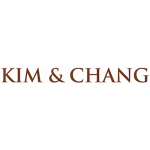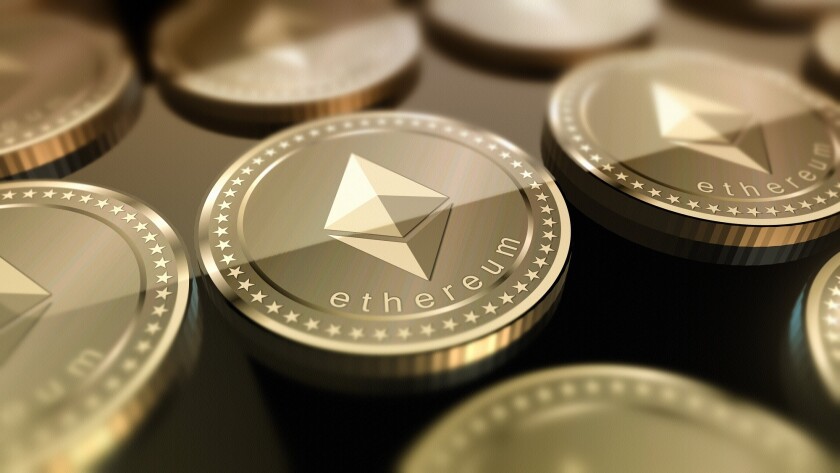Cryptocurrencies – or digital assets in a broader sense – have evolved to include all different types of assets that are digitally issued via distributed ledger technology. Their ecosystem has rapidly developed and is now characterised by not just cryptocurrencies and digital assets but also decentralised autonomous organisations (DAO) as well as decentralised finance (DeFi).
Peer-to-peer oversight has been introduced by distributed ledger technology, highlighting the potential of digital assets and their industry to foster a more transparent, fair, and efficient market than the one created by centralised institutions.
But the digital asset industry has not yet realised its potential. It’s quite the opposite. Over the last few years, mockeries have overshadowed the industry’s ideal of decentralisation. Scams, not transparency, have come to epitomise digital assets. Numerous instances of market manipulation, insider trading, and rug-pulls exploiting the gap between the existing legal framework and the new technology have raised concerns among regulators.
The recent turmoil in the digital asset market has had significant impact on financial stability due to its increasing interconnectedness with traditional finance, further prodding the regulators. Consequently, the regulators across the globe are gearing to either adopt novel interpretations of the existing laws or enact new laws to regulate digital assets.
Beginning of the transition
Today, the ‘ Act on Reporting and Using Specified Financial Transaction Information’ (AML Act) is the first and only law in South Korea, aside from the tax laws, that explicitly defines and regulates digital assets (referred to as virtual assets under the AML Act).
The AML Act imposes a de facto license requirement and other anti-money laundering obligations on virtual asset service providers. While the coverage of the AML Act is broad, its application has focused primarily on prevention of money-laundering activities involving major virtual asset service providers like exchange, wallet and custody service providers.
The AML Act is not intent on – at least to date – covering the general needs of the digital asset industry as a whole: protecting the rights of consumers and investors, promoting financial stability and mitigating risks around illicit activities, and supporting responsible development of the industry and users’ access to the new services and technologies.
The potential treatment of digital assets as financial instruments like securities also remains an unanswered riddle in South Korea. The door is wide open for the regulators to apply the ‘Financial Investment Services and Capital Markets Act’ (FSCMA), the law governing securities, etc. in South Korea, to digital assets. Yet, the regulators have not issued any clear guidance on how the actual application would take place, ballooning unpredictability in the digital asset market.
With the lack of any statutory framework directly applicable for digital assets, the regulators’ press releases issued from time to time and unofficial guidelines offered to relevant parties have governed the regulatory regime. For example, although there is no law to such effect, initial coin offerings have been prohibited in South Korea based on the statement released by the government that any type of initial coin offerings are banned. The same goes for financial institutions’ investment into the digital asset industry or operation of the related businesses, driving a wedge between traditional finance and the digital asset industry.
That regulatory landscape has begun its transition on March 9 2022 with Suk-Yeol Yoon’s election as the President of South Korea. President Yoon’s campaign agenda included enacting a new law for digital assets called the ‘Framework Act on Digital Assets’. The ‘110 National Agenda of the Yoon Administration’ announced in May 2022 reiterated that the plan to enact an overarching act on digital assets to govern non-security tokens is afoot and that the FSCMA would regulate security tokens. Moreover, there exists bipartisan consensus to establish a legal framework targeting digital assets with around 14 bills pending before the National Assembly of South Korea.
In the US, the regulatory framework for the digital asset industry has heavily relied on the existing laws and deferred to individual agencies to make and apply their interpretations. For instance, the Securities Exchange Commission has published the ‘Framework for ‘Investment Contract’ Analysis of Digital Assets’ to serve as reference both within and outside of the US.
On March 9 2022, President Joe Biden issued the ‘Executive Order on Ensuring Responsible Development of Digital Assets’ (Executive Order). Through the Executive Order, the White House has, for the first time, presented the US’ regulatory direction for the digital asset industry.
While the Executive Order does not provide an answer to every detailed policy question, it at least expresses the US government’s willingness to step in for the ‘responsible development’ of the digital asset industry with interagency collaboration. The US Congress has responded to the Executive Order by introducing bipartisan bills like the Lummis-Gillibrand Responsible Financial Innovation Act and the Stabenow-Boozman Digital Commodities Protection Act of 2022 to impart the regulatory predictability to the market.
Finally, the EU’s adoption of its mandate to negotiate the markets in crypto-assets (MiCA) regulation on March 14 2022 and the consequent provisional agreement thereof reached on June 30 2022 attests to the global transition to bring the digital asset industry under a clearer regulatory framework than now with the common aim to promote market order, encourage market development, and protect consumers.
Old together with new
With many, if not all, jurisdictions around the globe progressing to establish a stable legal framework for digital assets, we are seeing various models that sit on the spectrum between utilisation of the existing laws and introduction of a new set of laws.
The Yoon Administration in South Korea seems to tilt towards a hybrid model under which security tokens would be governed by the FSCMA and the others by a new framework act. To be able to utilise the existing securities law, implementation of explicit and detailed guidelines for classifying security and non-security tokens would be the first and foremost task.
The objective behind applying the existing laws would be to safeguard investors and promote financial stability and uniformity with the traditional finance industry. At the same time, it is critical to neither over-read nor over-apply the existing laws to the unique characteristics of the digital asset industry.
The regulators should be aware of the risk of arriving at a Procrustean solution of requiring exact conformity instead of paying respect to certain material differences between traditional finance and the nascent industry. A tight application of the existing laws would likely stifle the innovation of the digital asset industry particularly when nobody knows in which direction or how far it would mature.
The regulators and legislators should begin simultaneous discussions on a new framework act as well, especially over the legal nature of digital assets. Whether digital assets give rise to property or contractual rights should be the priority question to be addressed under the civil law system of South Korea.
If digital assets are deemed as properties with emphasis on their capabilities to be possessed, they become generally bound to the Civil Code (or an applicable special law) with respect to the rights to exclusive possession, use, encumbrance and transfer. Alternatively, if we underscore the contractual nature whereby activities around digital assets are defined via private contracts, more flexibility may be available in devising various types of arrangements.
Once this question is answered, the subsequent discussions around, among others, consumer protection, criminal enforcement, treatment in bankruptcy proceedings would become more efficient and legally stable. With the involvement of multiple parties, ranging from issuers, exchange service providers to holders, in a transaction with digital assets, who should be held responsible for which part of the transaction is another topic to be tackled.
The above issues apply the same to the question of which regulatory body should be responsible for the digital asset industry. The existing regulators of traditional finance would have the best expertise in not only prudential supervision of financial institutions but also safeguarding consumer protection and financial stability. However, their perception of the digital asset industry and its innovative potential is likely inclined to stay within the boundaries of the principle of the ‘same activity, same regulation’.
Implementing appropriate measures for the digital asset industry’s departures from traditional finance in various aspects may be a challenge for the existing regulators. Hence, establishment of a new regulatory body may be an idea worth putting on the table to motivate more ingenious approaches to regulating the digital asset industry though conformity with the existing legal framework would have to be secured to a certain extent.
Regardless of which side of the spectrum we find ourselves, the ultimate regulatory goal should be to strike a right balance among securing a sufficient level of consumer protection and financial stability, providing access to the newly available services to the public, and incentivising continuous and responsible innovation with built-in flexibility. This objective would only be accomplished with detailed deliberation and exchange of ideas among various stakeholders.
Cross-border nature of digital assets and the call for global harmonisation
We should acknowledge that there will not be a one-size-fits-all answer to regulating digital assets. However, we should always be mindful that digital assets are cross-border in nature. The more diverse the regulations are across borders, the less effective they would be in practice. This adds another layer of complexity for the regulators everywhere.
Even if digital assets are issued in Europe, they may be traded elsewhere in the world. Upon issuance, no one retains absolute control over how they are traded or used. At one moment, the European laws would apply but five seconds later, the South Korean laws may apply to the underlying transaction. Sometimes the laws of multiple jurisdictions may apply at the same time.
The jurisdictional boundaries are blurrier than ever for digital assets and where they are originally from is no longer a question worthy of asking. Even when one conducts its business fully compliant with the laws of its resident jurisdiction, there always remains a material risk of violating laws of other jurisdictions as their application cannot be ruled out.
In other words, without global harmonisation, individual regulatory phalanx in one jurisdiction will be blunted and the development of the digital asset industry as a whole would be inhibited. At this juncture when the regulators are devising their frameworks suitable for their own jurisdictions, multilateral discussions on the overarching direction and practical means of borderless cooperation, including for the purpose of criminal investigations and enforcement, must concurrently take place.
The South Korean regulators appear to have already recognised such intrinsic nature of the digital asset industry and to be actively monitoring the regulatory directions in other jurisdictions. Bridging the gap among different jurisdictions starts from comparative studies and will culminate in reaching a global standard. The principle of reciprocity should apply to the digital asset regulations – similar to how the privacy laws around the world are gradually merging to agree on certain core regulatory standards.
The digital asset industry is a double-edged sword with the potential for increasing efficiency and accessibility as compared to the existing economic and financial system on one side, and the risk of volatility, structural vulnerability and illicit finance on the other.
With the industry’s cross-border nature, multilateral cooperation to achieve global harmonisation of the applicable laws and regulations, not to mention enforcement mechanisms, has become more pertinent than ever.




